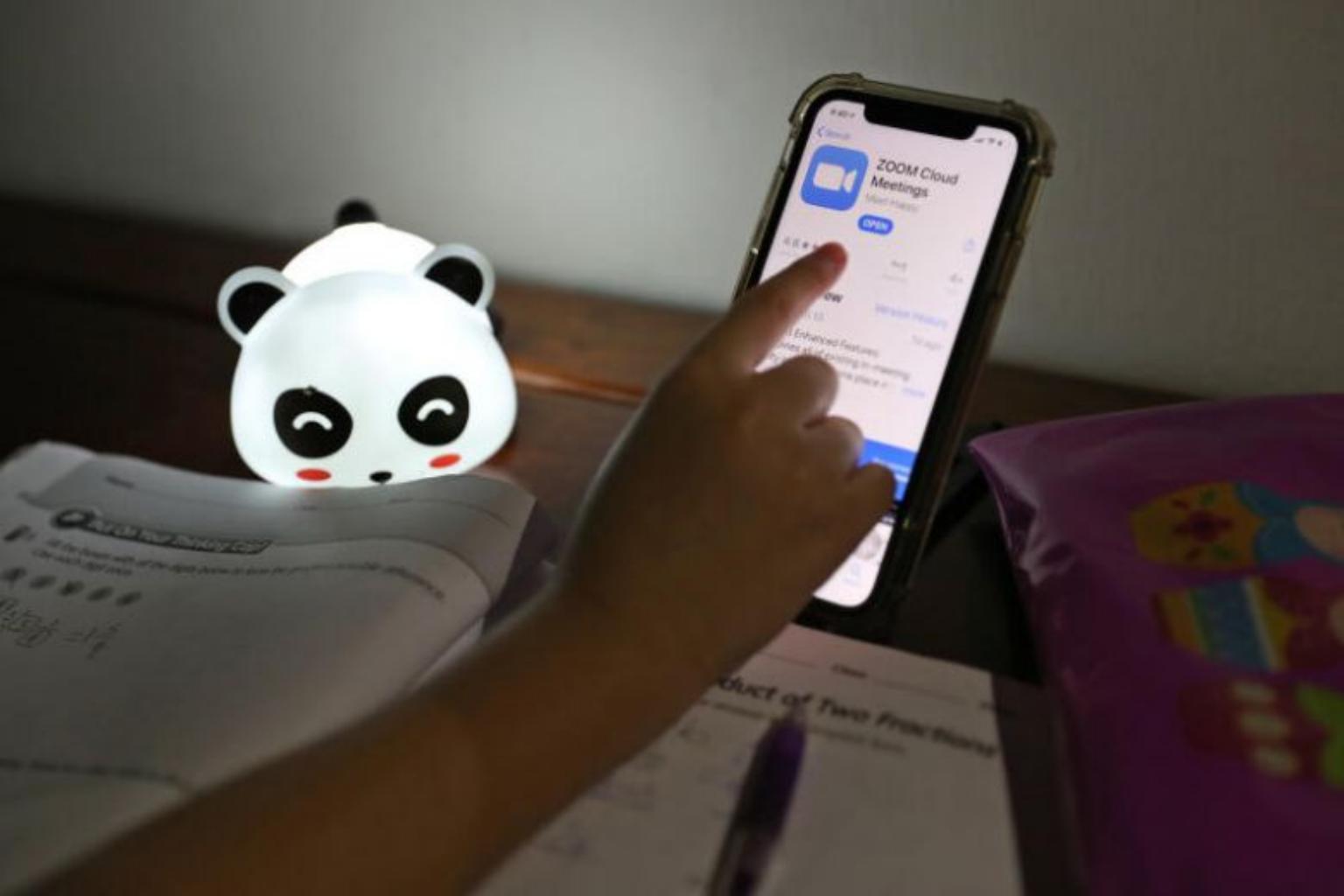Coronavirus: MOE allows Zoom for lessons but adds new safeguards
Sign up now: Get tips on how to help your child succeed

Security settings have been consolidated to make it easier for users to activate the settings.
ST PHOTO: WANG HUI FEN
Jolene Ang
Follow topic:
The Ministry of Education (MOE) has allowed schools to progressively resume the use of video-conferencing platform Zoom after having introduced three additional layers of defence.
They include an all-encompassing "security button" which consolidates the conferencing platform's security features.
The move comes after reports last week of privacy breaches while students were using Zoom.
Hackers had hijacked the streaming of a lesson and showed obscene pictures to some students, and separately, sent out lewd messages.
Teachers were then told to stop using it for their home-based teaching and two police reports were made over the incident, MOE's divisional director for the educational technology division Aaron Loh told The Straits Times yesterday. The ministry has since put in place three layers of defence, he added.
Security settings on the platform have been consolidated into the security button, to make it easier for users to activate the settings.
MOE worked with the American conferencing platform on this, said Mr Loh.
In addition to the security button, the teachers' default security settings on Zoom are now centrally managed by the ministry to "further secure the platform across all school users in a consistent way".
Teachers will be familiarised with the new security feature.
Another layer of defence has MOE restricting the features of Zoom that teachers can leverage, such as disabling screen annotation and screen-sharing, as well as the use of the whiteboard feature, to avoid abuse or misuse.
"As security concerns are addressed and users become more familiar with the security protocols, we will progressively enable these features again," Mr Loh said.
The third security measure involves teachers signing off on the fact that they are familiar with the security protocols, and are ready to follow the enhanced security settings for Zoom.
Only after submitting this acknowledgement of compliance will a teacher be allowed to carry out live lessons on the platform.
A Zoom spokesman previously told ST that the company had changed default settings for education users, and was adding the need for passwords for its free basic users, a feature which was previously not enabled.
Google Meet has also enhanced its security measures, and now requires users to log in before being allowed to participate in classes.
In a list of frequently asked questions updated yesterday, the ministry noted that many other video conferencing tools, such as Facebook Live and Cisco WebEx, can also be tapped.
There is no requirement to use Zoom and Google Meet, though they are two of the most commonly used platforms, MOE added.
"Schools are provided with a checklist and other materials to ensure the safety and security of our students and teachers when carrying out video conferencing on these platforms.
"Students must also be responsible users of technology and play their part by observing appropriate behaviour when video conferencing, such as following their teachers' instructions and not sharing passwords with others," said MOE.
Mr Loh said with full home-based learning, video conferencing platforms have become important tools for teachers to engage students and bridge the gap between classroom and homelearning experiences.
"MOE will continue to work with schools and parents to ensure a safe learning environment for our students," he added.

